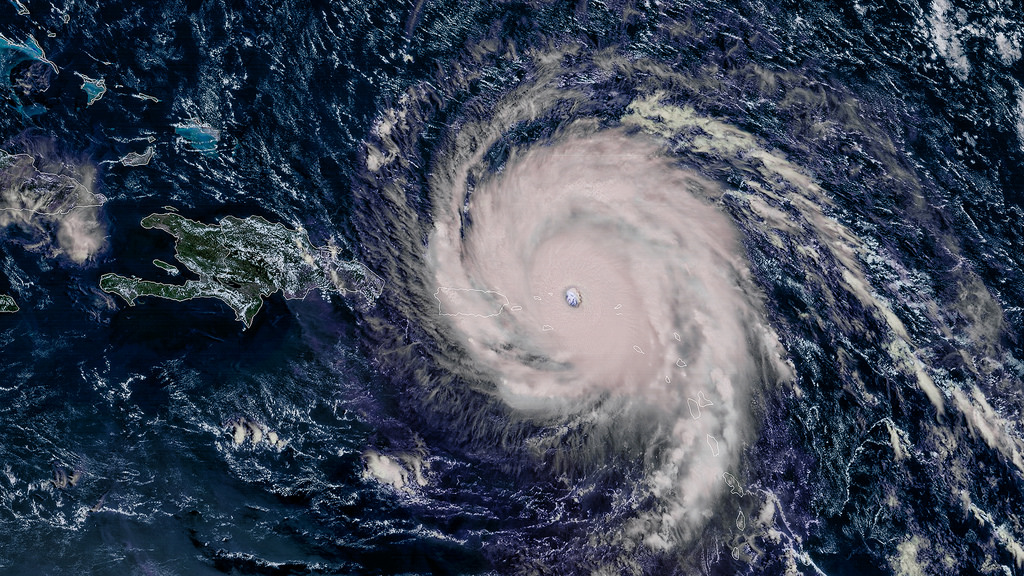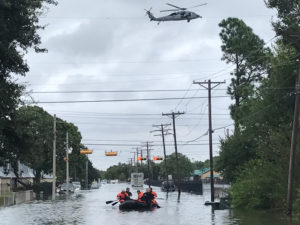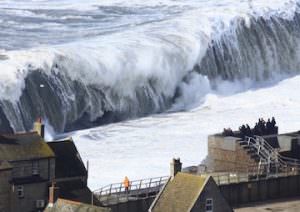Cuba Surveys Toppled Houses, Flooded Cities in Irma’s Wake
The hurricane floods hundreds of miles of the country's coastline after devastating several other Caribbean islands and killing 22 people. Suomi NPP/VIIRS satellite view of Hurricane Irma on Sept. 3. (NASA)
Suomi NPP/VIIRS satellite view of Hurricane Irma on Sept. 3. (NASA)
CAIBARIEN, Cuba — Hurricane Irma ripped roofs off houses, collapsed buildings and flooded hundreds of miles of coastline as it raked Cuba’s northern coast after devastating islands the length of the Caribbean in a trail of destruction that has left 22 people dead so far.
As Irma left Cuba and directed its 130 mph (215 kph) winds toward Florida Sunday, authorities on the island were warning of staggering damage to keys along the northern coast studded with all-inclusive resorts and cities, as well as farmland in central Cuba.
There were no immediate reports of deaths in Cuba—a country that prides itself on its disaster preparedness—but authorities were trying to restore power, clear roads and warning that people should stay off the streets of Havana because flooding could continue into Monday.
Residents of “the capital should know that the flooding is going to last more than 36 hours, in other words, it is going to persist,” Civil Defense Col. Luis Angel Macareno said late Saturday.
As Irma rolled in, Cuban soldiers went through coastal towns to force residents to evacuate, taking people to shelters at government buildings and schools—and even caves.
Video images from northern and eastern Cuba showed uprooted utility poles and signs, many downed trees and extensive damage to roofs. Witnesses said a provincial museum near the eye of the storm was in ruins. And authorities in the city of Santa Clara said 39 buildings collapsed.
More than 5,000 tourists were evacuated from the keys off Cuba’s north-central coast, where the government has built dozens of resorts in recent years.
Civil Defense official Gregorio Torres said authorities were trying to tally the extent of the damage in eastern Cuba, home to hundreds of rural communities.
In Caibarien, a small coastal city about 200 miles (320 kilometers) east of Havana, winds downed power lines and a three-block area was under water. Many residents had stayed put, hoping to ride out the storm.
Before slamming into Cuba, Irma had caused havoc in lush Caribbean resorts such as St. Martin, St. Barts, St. Thomas, Barbuda and Anguilla.
Many of Irma’s victims fled their battered islands on ferries and fishing boats for fear Hurricane Jose would destroy or drench anything Irma left untouched, but Jose veered away before doing much more damage.
On the Dutch side of St. Martin, an island divided between French and Dutch control, an estimated 70 percent of the homes were destroyed by Irma, according to the Dutch government.
Prime Minister William Marlin said about 1,600 tourists had been evacuated and efforts were being made to move 1,200 more.
Marlin said many countries and people have offered help to St. Maarten, but authorities were waiting on the weather conditions to see how it could be coordinated. Authorities are still trying to determine the extent of damage to the island but he said 28 police officers lost homes during the storms.
The U.S. State Department helped more than 500 Americans fly out of St. Martin, starting with those in need of urgent medical care, spokeswoman Heather Nauert said.
Carol Basch, a 53-year-old tourist from Savannah, Georgia, took refuge during the storm in the bathroom of her St. Martin hotel room after windows shattered. She stayed there praying for about four hours, surrounding herself with pillows.
“I kept saying, ‘Lord, please stop this, and soon, soon,'” said Basch, who was evacuated to Puerto Rico. “I’m glad I’m alive. I didn’t think I was going to make it.”
France and the Netherlands said their islands in the Caribbean were spared major damage from Jose, which passed farther away from the islands than expected.
The U.S. National Hurricane Center downgraded a hurricane warning for Barbuda and Anguilla. A hurricane watch also was discontinued for nearby Antigua.
In a tweet, the Dutch navy said the security situation on St. Maarten, which saw widespread looting and robberies after Hurricane Irma, had improved thanks to patrols by marines and police flown to the island to help overwhelmed local law enforcement.
___
Rodriguez reported from Havana. Associated Press writers Michael Weissenstein in Havana; Ben Fox in Miami; Ian Brown in St. Thomas, U.S Virgin Islands; Danica Coto in San Juan, Puerto Rico; Seth Borenstein in Washington; Alina Hartounian in Phoenix; Thomas Adamson and Angela Charlton in Paris; and Mike Corder in The Hague contributed to this report.
Your support matters…Independent journalism is under threat and overshadowed by heavily funded mainstream media.
You can help level the playing field. Become a member.
Your tax-deductible contribution keeps us digging beneath the headlines to give you thought-provoking, investigative reporting and analysis that unearths what's really happening- without compromise.
Give today to support our courageous, independent journalists.



You need to be a supporter to comment.
There are currently no responses to this article.
Be the first to respond.